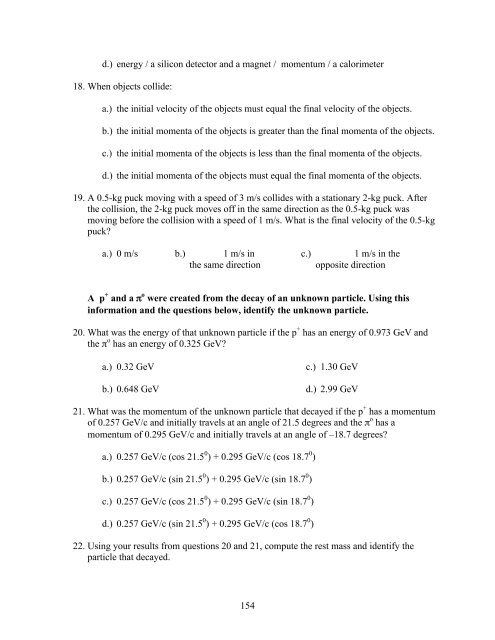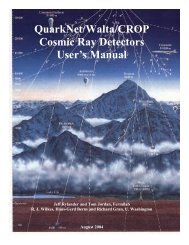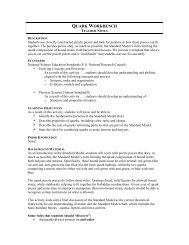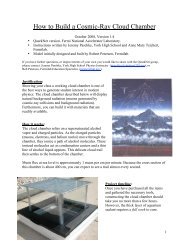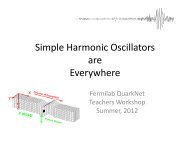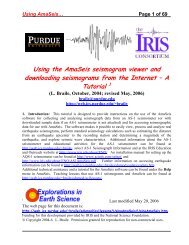Teaching Modern Physics - QuarkNet - Fermilab
Teaching Modern Physics - QuarkNet - Fermilab
Teaching Modern Physics - QuarkNet - Fermilab
Create successful ePaper yourself
Turn your PDF publications into a flip-book with our unique Google optimized e-Paper software.
d.) energy / a silicon detector and a magnet / momentum / a calorimeter<br />
18. When objects collide:<br />
a.) the initial velocity of the objects must equal the final velocity of the objects.<br />
b.) the initial momenta of the objects is greater than the final momenta of the objects.<br />
c.) the initial momenta of the objects is less than the final momenta of the objects.<br />
d.) the initial momenta of the objects must equal the final momenta of the objects.<br />
19. A 0.5-kg puck moving with a speed of 3 m/s collides with a stationary 2-kg puck. After<br />
the collision, the 2-kg puck moves off in the same direction as the 0.5-kg puck was<br />
moving before the collision with a speed of 1 m/s. What is the final velocity of the 0.5-kg<br />
puck?<br />
a.) 0 m/s b.) 1 m/s in<br />
the same direction<br />
154<br />
c.) 1 m/s in the<br />
opposite direction<br />
A p + and a π o were created from the decay of an unknown particle. Using this<br />
information and the questions below, identify the unknown particle.<br />
20. What was the energy of that unknown particle if the p + has an energy of 0.973 GeV and<br />
the π o has an energy of 0.325 GeV?<br />
a.) 0.32 GeV<br />
b.) 0.648 GeV<br />
c.) 1.30 GeV<br />
d.) 2.99 GeV<br />
21. What was the momentum of the unknown particle that decayed if the p + has a momentum<br />
of 0.257 GeV/c and initially travels at an angle of 21.5 degrees and the π o has a<br />
momentum of 0.295 GeV/c and initially travels at an angle of –18.7 degrees?<br />
a.) 0.257 GeV/c (cos 21.5 0 ) + 0.295 GeV/c (cos 18.7 0 )<br />
b.) 0.257 GeV/c (sin 21.5 0 ) + 0.295 GeV/c (sin 18.7 0 )<br />
c.) 0.257 GeV/c (cos 21.5 0 ) + 0.295 GeV/c (sin 18.7 0 )<br />
d.) 0.257 GeV/c (sin 21.5 0 ) + 0.295 GeV/c (cos 18.7 0 )<br />
22. Using your results from questions 20 and 21, compute the rest mass and identify the<br />
particle that decayed.


